Что делает Китай по-настоящему знаменитым и почему мир не может его игнорировать
Bruce Li•May 24, 2025
От древних династий до городов будущего, Китай — это не просто точка на карте, это страна, которая невообразимым образом сформировала мир.
В этой статье мы рассмотрим, чем известен Китай и почему он сегодня актуален как никогда. Независимо от того, интересуетесь ли вы его историей, планируете посетить его или просто хотите понять его место в мире, это руководство даст вам полную картину.
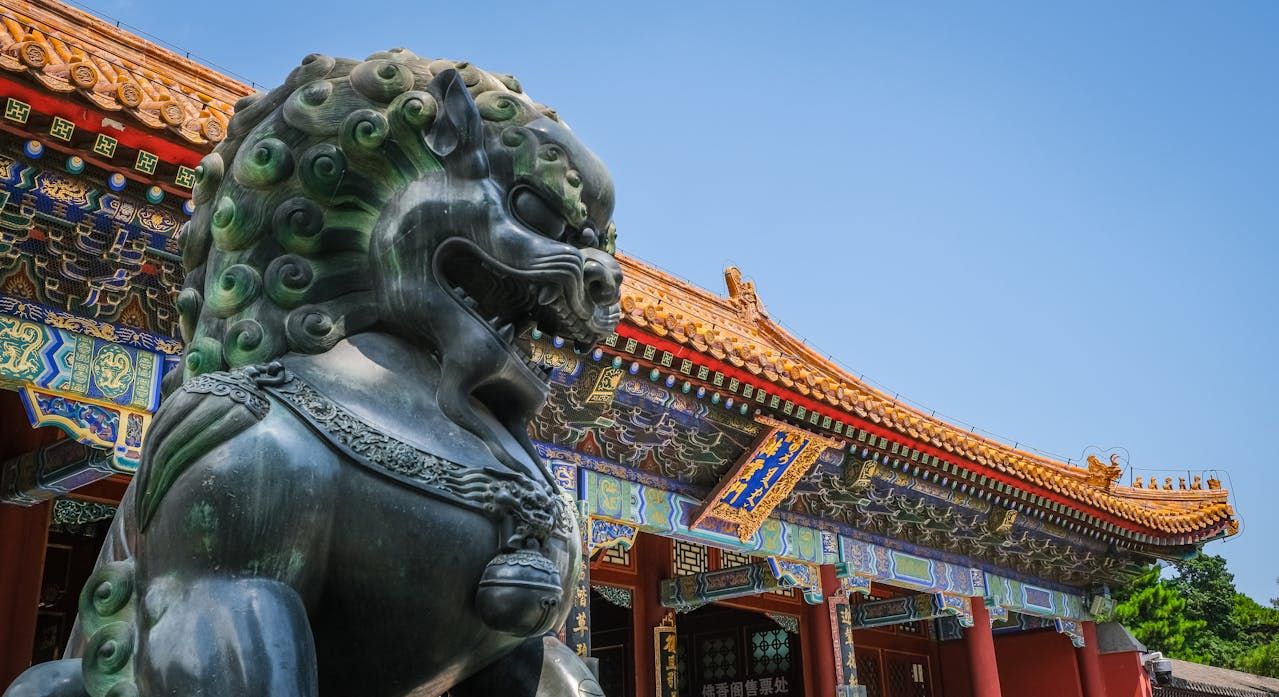
Что делает Китай по-настоящему знаменитым
Земля династий: история, высеченная в камне, шелке и стратегии
История Китая — это череда долгих и сложных событий, включающих как разделение, так и единство. Один из важнейших поворотных моментов наступил с приходом династии Цинь примерно в 221–206 годах до нашей эры. Впервые Китай был объединен под единым центральным правительством.
Первый император, Цинь Шихуан, внес множество важных изменений для объединения страны. Он унифицировал систему письменности повсеместно, чтобы люди по всему Китаю могли лучше понимать друг друга. Он также создал единую валюту и установил стандартные веса и меры, чтобы упростить торговлю и повседневную жизнь.
Эти изменения помогли объединить различные регионы и упростили правительству управление всей империей. Правители Цинь осуществляли амбициозные проекты, такие как первая версия Великой стены, для защиты от нападений северных племен. Они также создали знаменитую Терракотовую армию — тысячи глиняных солдат, похороненных вместе с императором, чтобы охранять его в загробной жизни. Хотя династия Цинь просуществовала недолго, ее идеи об управлении страной повлияли на все будущие китайские правительства.
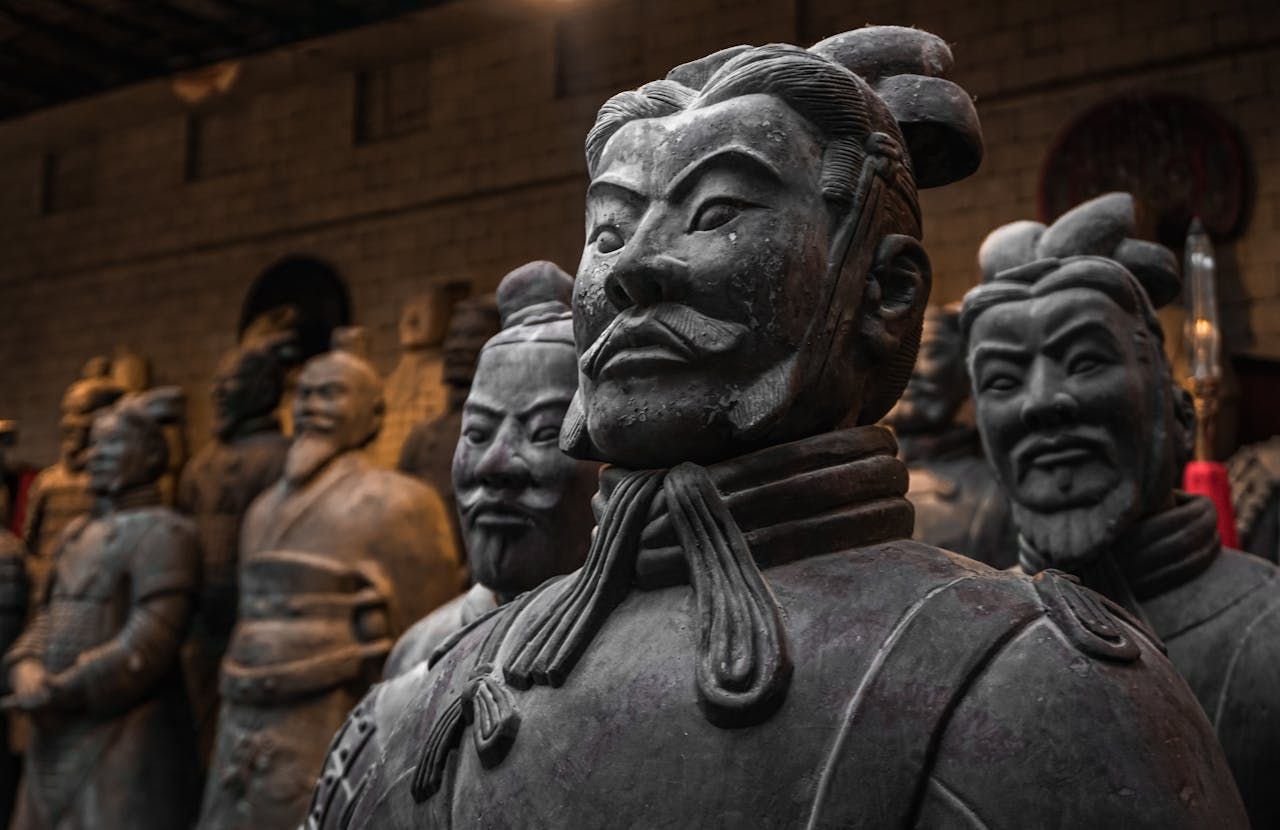
Династия Мин (1368–1644) восстановила сильный центральный контроль над Китаем после периода разделения и нестабильности. Они исследовали моря с большими флотилиями под предводительством Чжэн Хэ, укрепляя присутствие Китая в Индийском океане. Мин завершили строительство Великой стены в том виде, в каком мы видим ее сегодня, и способствовали развитию искусства, литературы и городов. Как период Хань, так и период Мин считаются золотыми веками в истории Китая благодаря их культурным и экономическим успехам.
После династии Мин Китаем правила династия Цин с 1644 по 1912 год. После веков императорского правления крах Цин в 1912 году ознаменовал конец династической эпохи и начало существования Китайской Республики.
Вам также может понравиться: 18 забавных фактов о Китае здесь
Культовые достопримечательности, которые рассказывают истории (если знать, куда смотреть)
Китай является домом для некоторых из самых культовых достопримечательностей мира, каждая из которых рассказывает историю о власти, искусстве и повседневной жизни.
Хотя Великая стена известна, многие посетители не осознают, что некоторые из ее самых увлекательных участков находятся вдали от толпы. Такие места, как Губэйкоу, Цзиньшаньлин и Симатай, предлагают не только впечатляющие виды, но и наслоения истории. Фактически, части стены здесь датируются династией Северная Ци и показывают, как структура развивалась на протяжении веков для защиты северной границы Китая.
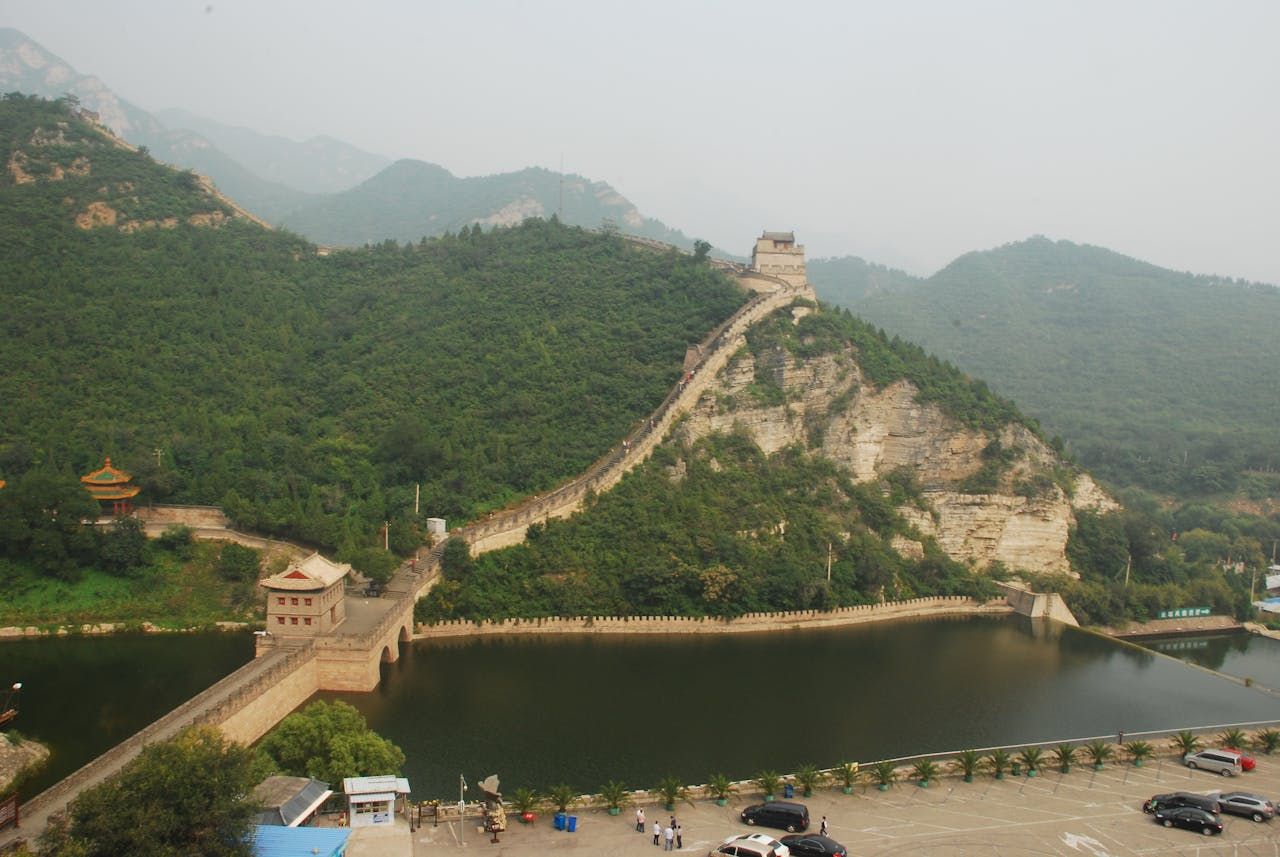
В Пекине Запретный город когда-то был домом императоров. В нем почти 1000 зданий и множество интересных мест, таких как Зал Высшей Гармонии, где проводились церемонии, и личные покои императора. Есть также другие скрытые сокровища, такие как Галерея часов и Галерея сокровищ. Рядом площадь Тяньаньмэнь и парк Цзиншань помогают поместить императорский дворец в более широкий исторический и культурный контекст.
Недалеко от города Сиань, Терракотовая армия — одно из самых невероятных открытий в Китае. Тысячи глиняных солдат были похоронены, чтобы охранять гробницу Цинь Шихуана, первого императора Китая. Каждая фигура уникальна, что показывает размах и амбиции императора даже в загробной жизни.
Но знаменитые места Китая не ограничиваются широко известными. Фуцзяньские тулоу — это большие круглые или квадратные здания, где вместе проживают много семей. Они были прочными и построены на века. Пещеры Могао недалеко от Дуньхуана хранят яркие фрески и статуи, прослеживающие тысячу лет буддийского искусства и культуры Шелкового пути. Другие места, такие как Чжанцзяцзе, с его высокими каменными столбами, и пустынный город Дуньхуан, показывают природную красоту и культурное разнообразие Китая.
Эти достопримечательности, известные и скрытые, помогают нам понять прошлое Китая, а также разные народы и культуры, которые его сформировали.
Вам также может понравиться: Как купить лучшие сувениры в Китае
Нация множества: Культуры и народы, которые составляют Китай
Китай — страна, известная своими глубокими традициями, разнообразными народами и современным ростом. Хотя этническая группа хань составляет большинство, Китай официально признает 56 этнических групп, включая 55 меньшинств, таких как уйгуры, тибетцы, чжуаны, хуэйцы и мяо. Эти группы проживают в автономных регионах и имеют свои языки, религии и обычаи.
Даже со всеми изменениями в современной жизни некоторые традиции по-прежнему являются частью повседневной рутины. Чай и Тайцзицюань — два хороших примера. Чайная культура насчитывает тысячи лет и связана с идеями баланса и мира в даосизме. В древних кварталах, таких как хутуны Пекина, люди до сих пор проводят чайные церемонии, где гости узнают о разных видах чая и о том, как их подавать. Тайцзицюань, медленное и мягкое боевое искусство, известное тем, что помогает с здоровьем, равновесием и сохранением спокойствия, часто практикуется в парках. В таких городах, как Пекин и Чэнду, часто можно увидеть людей, занимающихся Тайцзицюань утром.
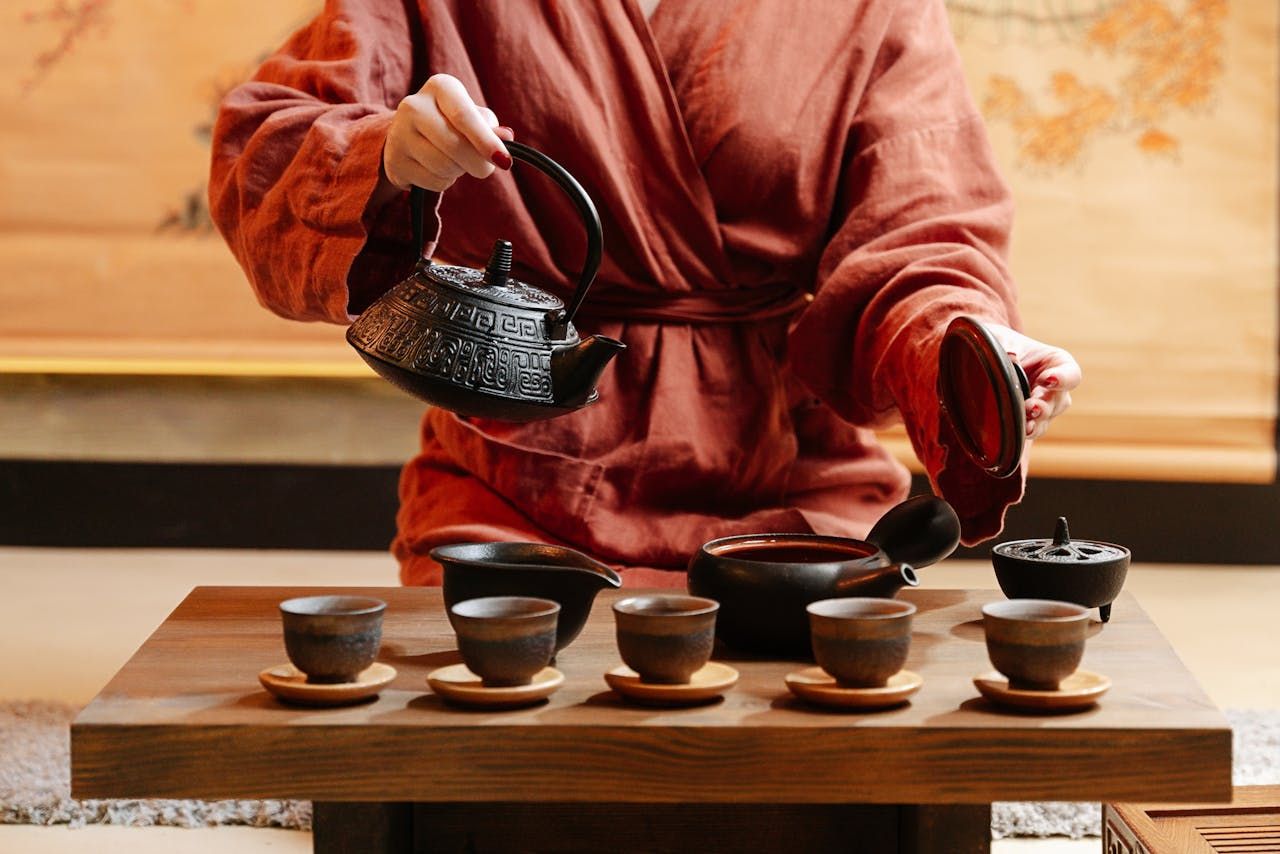
Китайские фестивали известны тем, что отражают важные ценности, такие как семья, природа и обновление. Один из самых больших, Китайский Новый год, посвящен избавлению от старого, встрече нового и воссоединению с семьей. Люди дарят красные конверты, почитают предков и наслаждаются традиционными блюдами. Другой крупный праздник — Фестиваль середины осени, корни которого уходят в поклонение луне и традиции урожая. Сегодня это время, когда семьи собираются вместе, едят лунные пряники и любуются полной луной, которая символизирует единство и сплоченность. Другие традиционные мероприятия, такие как Фестиваль лодок-драконов и Фестиваль фонарей, подчеркивают такие ценности, как память, общность и уважение к природным циклам жизни.
Помимо фестивалей и традиций, повседневная жизнь в Китае также формируется давними ценностями. Уважение к старшим, крепкие семейные узы и важность гармонии являются центральными для китайской культуры. Эти ценности влияют на то, как люди взаимодействуют дома, в обществе и даже на рабочем месте.
Язык, самобытность и повседневная жизнь
Китай — страна, где более миллиарда человек говорят на разных китайских языках. Двумя основными являются мандарин и кантонский. В то время как мандарин является официальным языком на большей части территории Китая и на Тайване, где используется более простое письмо, называемое упрощенными иероглифами, кантонский в основном говорят на юге Китая, в Гонконге и Макао, и он использует традиционные иероглифы.
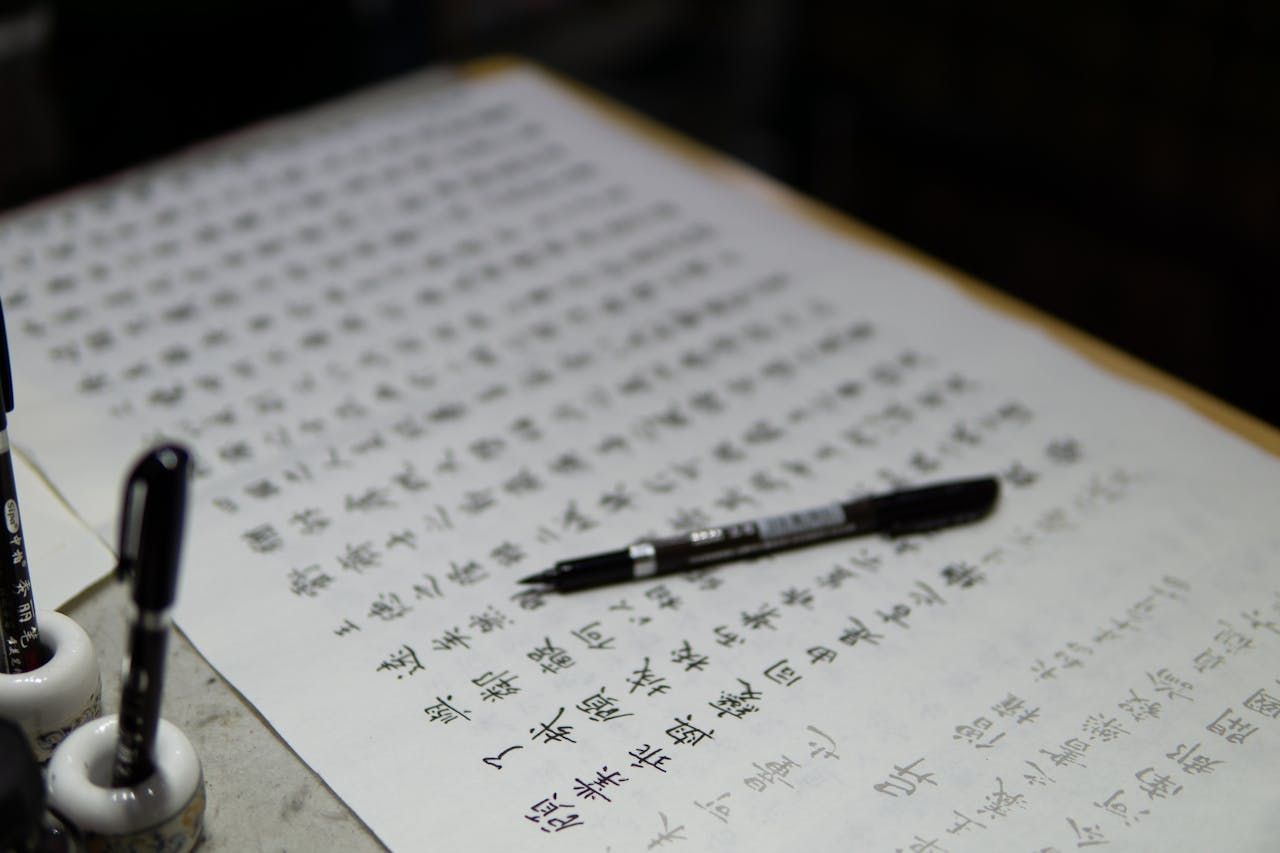
Они звучат очень по-разному. В мандарине четыре тона, что означает, что изменение высоты звука придает словам разные значения. В кантонском еще больше тонов, от шести до девяти. У них также разные грамматические правила и словарный запас. Например, кантонский сохраняет многие древние китайские слова и использует больше английских слов в таких местах, как Гонконг.
Крупнейшие города Китая демонстрируют впечатляющее разнообразие. Например, Пекин, с более чем 21 миллионом жителей, сосредоточен на политике и истории, наполнен правительственными учреждениями и древними достопримечательностями. Шанхай, еще более крупный, с населением более 24 миллионов человек, фокусируется на бизнесе и глобальных связях, с динамичным, современным ритмом. Такие города, как Гуанчжоу, Шэньчжэнь и Чунцин, имеют свои местные культуры и отрасли промышленности — от торговли до технологий и производства.
В крупных городах, таких как Пекин и Шанхай, многие молодые люди и специалисты могут говорить по-английски, особенно в таких местах, как бизнес-центры, школы и туристические зоны. Однако за пределами этих городов английский гораздо менее распространен. Если вы путешествуете по Китаю, полезно знать немного базового мандарина или кантонского и использовать приложения для перевода. Указатели в больших городах часто включают английский, но за пределами городских районов, как правило, нет.
Китай сейчас: Технологии, торговля и города будущего
Китай является домом для некоторых из самых быстрорастущих городов мира, причем Шанхай и Шэньчжэнь выделяются как яркие примеры.
Шанхай, экономический и финансовый центр Китая, — это город небоскребов, мировых компаний и богатых культурных учреждений, таких как Шанхайский музей и Power Station of Art. Здесь также расположена Шанхайская фондовая биржа, одна из крупнейших в мире, и он является крупным центром банковского дела, торговли и логистики. Город известен плотными скоплениями штаб-квартир транснациональных корпораций, современной инфраструктурой, крупными коммерческими районами, такими как Луцзяцзуй, и коммерческими небоскребами, включая Шанхайскую башню — самое высокое здание Китая.
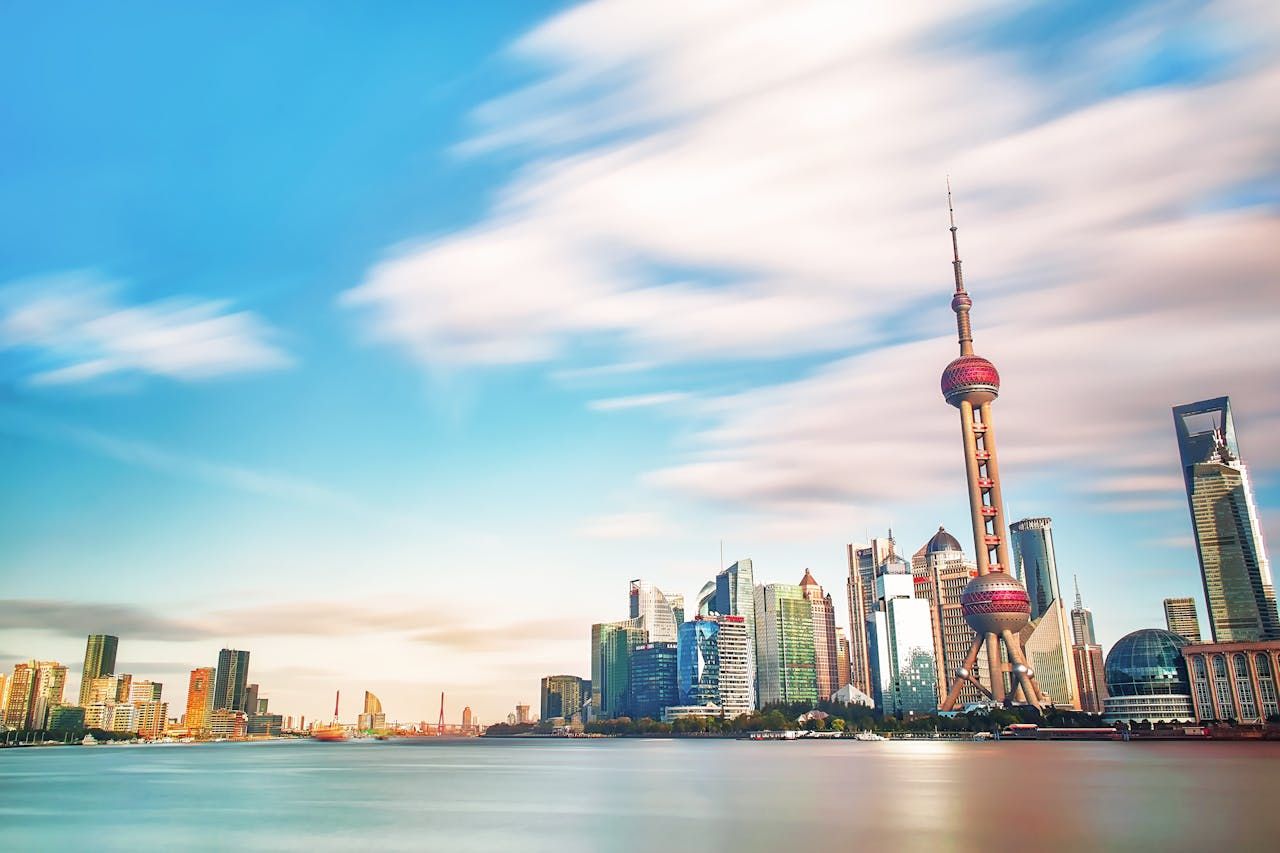
Телебашня Восточная жемчужина в Шанхае, Китай. Фото: zhang kaiyv
Шэньчжэнь, с другой стороны, стал ведущим центром технологий, производства и инноваций. Расположенный к северу от Гонконга, он является штаб-квартирой таких мировых технологических компаний, как Huawei, Tencent, DJI и BYD. Город развивался невероятно быстро после того, как в 1980 году получил статус первой особой экономической зоны Китая. Сегодня Шэньчжэнь является ключевой частью цепочки поставок аппаратного обеспечения Китая, производя электронику, телекоммуникационное оборудование и электромобили. Он также имеет сильную экосистему стартапов, ежегодно регистрируются тысячи новых технологических компаний. Город был назван Креативным городом ЮНЕСКО за достижения в области дизайна и инноваций.
Но в Китае есть не только Шанхай и Шэньчжэнь. Другие города по всей стране также быстро растут. Например, Ханчжоу является домом для Alibaba и лидером в области онлайн-шопинга, цифровых платежей и облачных технологий. Сучжоу известен своими красивыми старыми каналами и садами, но он также является крупным центром высокотехнологичного производства, включая робототехнику и нанотехнологии. На юго-западе Куньмин растет как ворота для торговли с Юго-Восточной Азией, с крупными инвестициями в транспорт и чистую энергетику. Сиань, некогда начальная точка Шелкового пути, теперь является современным городом, сосредоточенным на исследованиях, космических технологиях и образовании. Вместе эти города показывают, что рост Китая происходит не только в нескольких местах, но и по всей стране.
Короче говоря, что делает Китай знаменитым? Его способность расти, внедрять инновации и лидировать в технологиях. Такие города, как Шанхай и Шэньчжэнь, показывают миру, как выглядит будущее Китая.
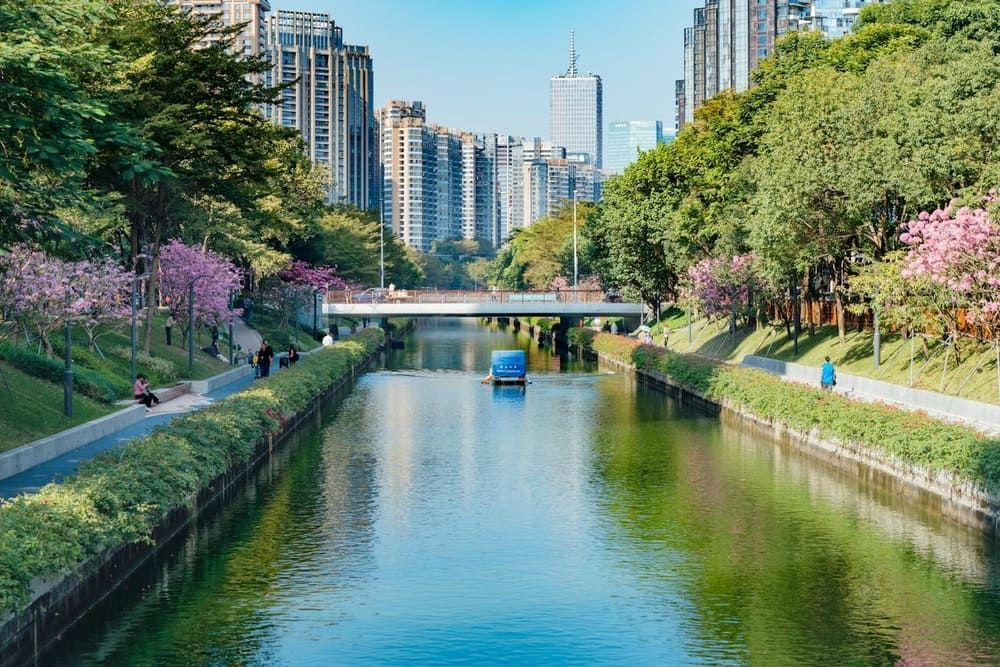
Безмятежный городской канал с цветущими деревьями в Шэньчжэне, Китай. Фото: Orange Ocean
С таким количеством мест для изучения в мегаполисах Китая, оставаться на связи в пути — это необходимость. Независимо от того, сканируете ли вы QR-коды для оплаты, бронируете билеты на высокоскоростные поезда или делитесь фотографиями с вершины Шанхайской башни, мобильный интернет делает все проще.
Получите бесплатную eSIM от Yoho Mobile перед поездкой. Это удобный и доступный способ оставаться онлайн в Китае без оплаты роуминга. Если вы захотите приобрести план eSIM позже, используйте код YOHO12 при оформлении заказа, чтобы получить скидку 12%!
Глобальное влияние: Как влияние Китая затрагивает вашу жизнь
Присутствие Китая ощущается в повседневной жизни по всему миру. Это проявляется в повседневной жизни так, что трудно игнорировать. Посмотрите на технику, которую вы используете — телефоны, ноутбуки, домашние гаджеты — огромная ее часть либо производится, либо собирается в Китае, что делает страну одним из крупнейших производителей в мировой цепочке поставок технологий. Приложение, в котором все сидят, TikTok, было создано китайской компанией ByteDance. Сейчас это одна из крупнейших платформ, формирующих мировую музыку, мемы и поп-культуру.
В моде Китай находится за кулисами, обеспечивая большую часть того, что мы видим в магазинах. Будучи одним из крупнейших производителей текстиля и одежды, китайские фабрики питают индустрию быстрой моды и крупные бренды одежды. Но это уже не только производство, Китай также инвестирует в дизайн и инновации, формируя тенденции, которые расходятся по всему миру моды.
Затем следует инициатива «Один пояс, один путь», масштабные усилия Китая по налаживанию партнерских отношений, открытию торговых путей и расширению влияния в Азии, Африке и Европе. Подумайте о портах, дорогах и железных дорогах, соединяющих регионы для более гладкой торговли и более крепких партнерских отношений. Это способ Китая расширять влияние посредством развития и дипломатии, а не войн и конфликтов.
Гонконг, Макао и эксперимент «Две системы»
Как вы уже поняли, Китай знаменит многими вещами, но одним из самых уникальных аспектов страны являются особые идентичности Гонконга и Макао. Хотя оба они являются частью Китая, они функционируют в рамках, известной как «Одна страна, две системы». Это дает им уровень автономии, который отличает их от материковой части, особенно в их правовой, экономической и административной системах.
Гонконг, переданный Великобританией в 1997 году, и Макао, возвращенный Португалией в 1999 году, каждый имеет свой Основной закон, подобный мини-конституции, который позволяет им сохранять свои суды, иммиграционные правила и даже валюты. В Гонконге используется гонконгский доллар (HKD), а в Макао — патака Макао (MOP).
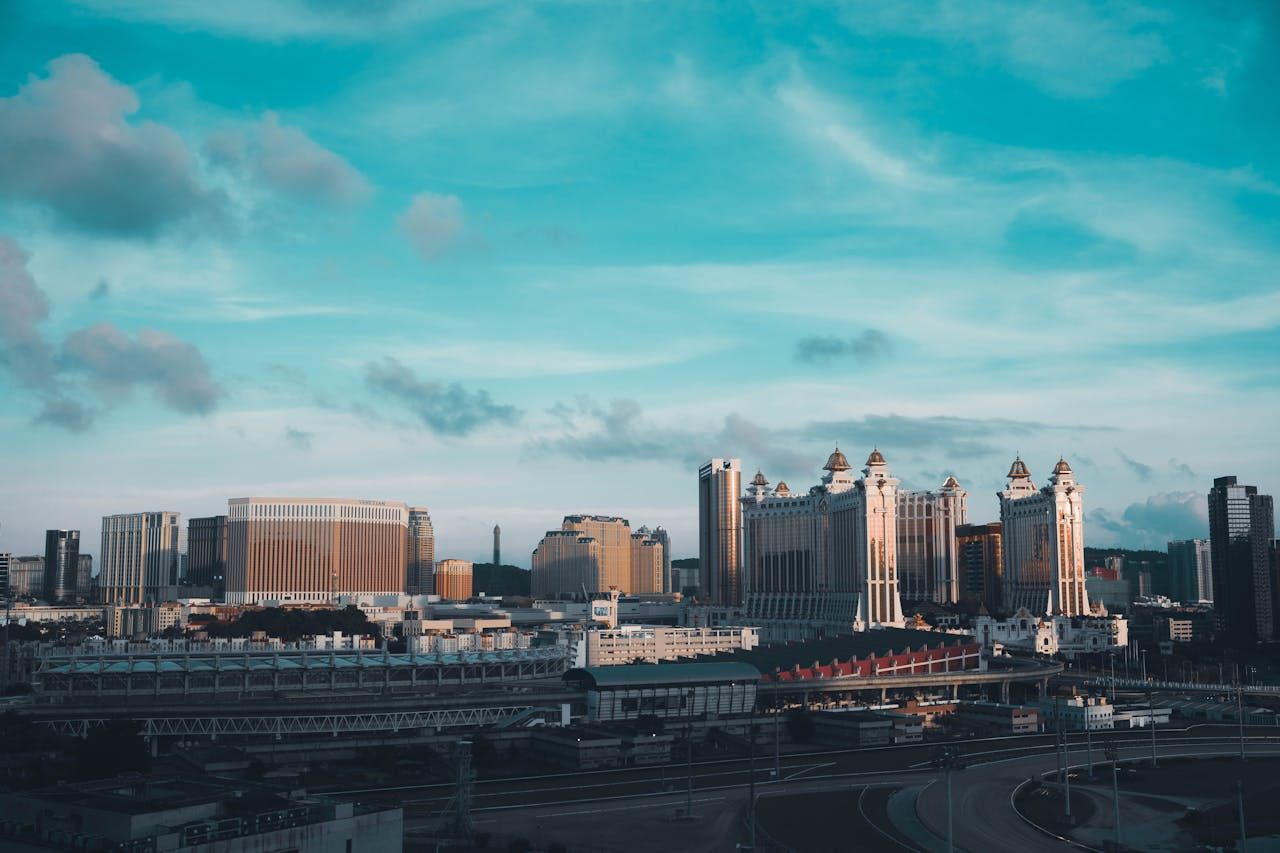
Городской горизонт под голубым небом в Макао, Китай. Фото: Gary Chan
Что действительно выделяет эти города, так это то, как история сформировала их культуру. Благодаря колониальному прошлому как Гонконг, так и Макао не являются полностью восточными или западными, но представляют собой нечто уникально промежуточное. Это культурное смешение все еще можно увидеть в широком использовании английского языка, двухэтажных автобусах и судах общего права. В Макао португальская архитектура, язык и католические церкви соседствуют с китайскими храмами и рынками. Это слияние традиций создает место, не похожее ни на одно другое в Азии.
Такое разнообразие китайских и западных корней также определяет то, как эти города ведут бизнес. С экономической точки зрения, Гонконг — это центр мировой финансовой системы и торговли, известный своими небоскребами, оживленными портами и фондовой биржей. Макао ориентирован на туризм и игорный бизнес, заработав мировую репутацию одного из ведущих мировых игорных центров.
Что добавляет еще один уровень сложности и любопытства, так это то, как оба города осуществляют пограничный контроль. Несмотря на то, что они являются частью Китая, они требуют отдельных виз и таможенных проверок. Поэтому путешествие между Гонконгом, Макао и материком не так просто, как пересечение городских границ.
Все это делает Китай знаменитым не только благодаря его обширной материковой части, но и благодаря этим двум городам, которые кажутся разными мирами внутри одной страны. Они представляют собой уникальную возможность увидеть, как история, закон и культура переплетаются неожиданным образом.
Культурный этикет, который может сделать или испортить ваше впечатление
Настоящий опыт знакомства с Китаем выходит далеко за рамки его достопримечательностей и фактов; это культура, которая окружает повседневную жизнь, от небольших жестов до великих традиций.
Культурный этикет — то, как люди взаимодействуют посредством жестов, приветствий и негласных правил — формирует впечатление от поездки так же сильно, как и сами достопримечательности. Уважение, вежливость и сохранение лица глубоко ценятся. Нечто столь простое, как снятие обуви у двери или вручение визитной карточки обеими руками, говорит о многом.
Дарение подарков имеет свои традиции. Некоторые предметы, такие как часы, зонты или что-либо острое, лучше избегать, так как они связаны с несчастьем или прощанием. Во время еды даже расположение палочек для еды имеет значение. Вставьте их вертикально в рис, и это будет воспринято как погребальный жест. Мелочи, но они важны.
Китайская еда — это гораздо больше, чем то, что вы найдете в коробках на вынос. У каждого региона своя история вкуса. В Чэнду завтрак может означать миску острых и онемеляющих лапши, такой как yibin ranmian (宜宾燃面), заправленная острым маслом, дробленым арахисом и маринованными овощами, или douhua (豆花) — нежное тофу в пряном, пикантном бульоне. Это огненный способ начать день, отражающий смелые вкусы сычуаньской кухни.
В тихом пекинском хутуне завтрак склоняется к утешительным и привычным паровым цзяоцзы (饺子), фаршированным свининой и пекинской капустой, подаваемым с черным уксусом и чесноком, или к теплой миске чжацзянмянь (炸酱面) — лапше, заправленной ферментированной бобовой пастой и мясным фаршем.
На юге, в Гуанчжоу, акцент смещается на свежесть, морепродукты и более легкие приправы. Традиционный димсам-стол может включать хагао (креветочные пельмени с полупрозрачной оболочкой), шумай (пельмени со свининой и грибами) и чхёнфань (рулетики из паровой рисовой лапши с говядиной или креветками), все подается с нежными чаями и предназначено для неторопливого наслаждения за беседой.
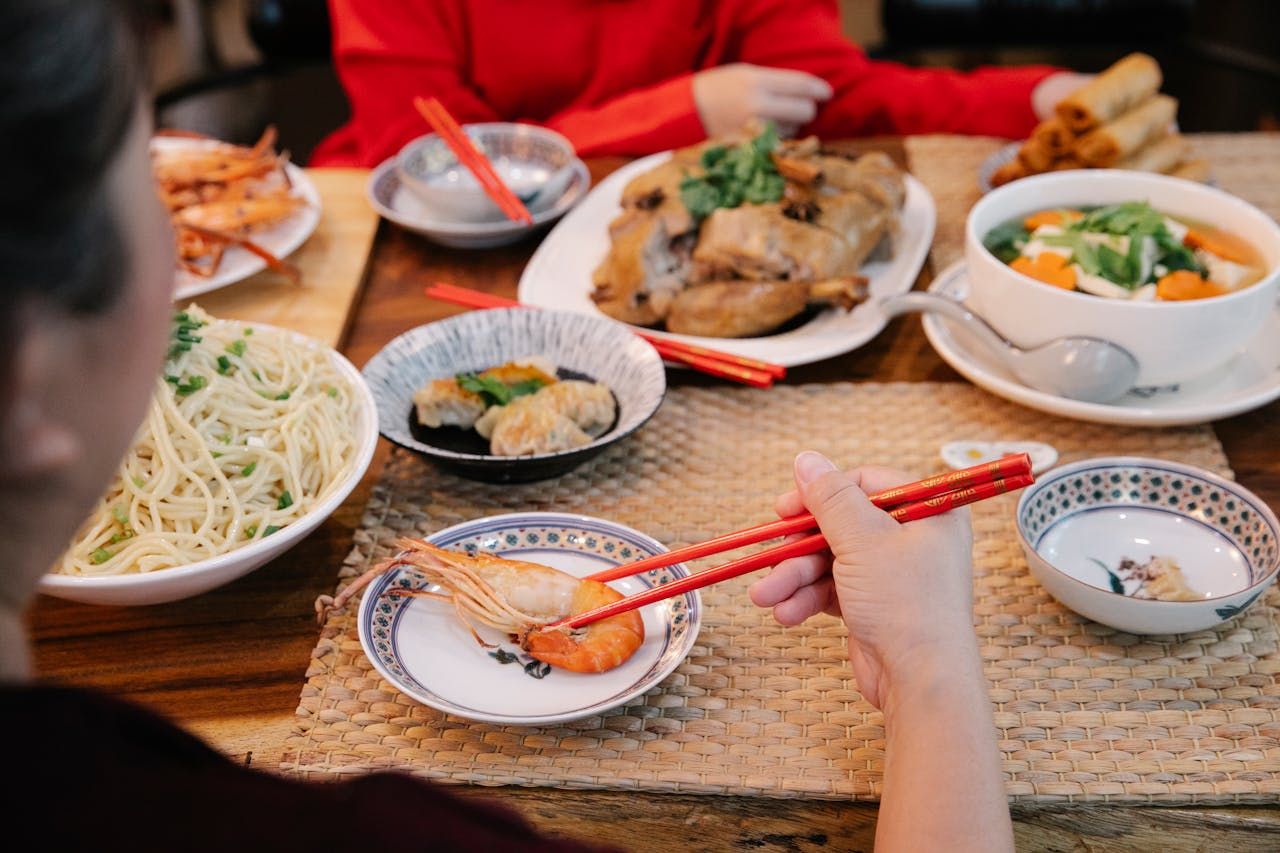
Помимо вкусов, трапезы в Китае полны негласных правил. Блюда подаются в семейном стиле, ставятся в центр круглого стола, чтобы способствовать общению. Палочки для еды — основной столовый прибор, и правильное их использование демонстрирует уважение. Никогда не вставляйте их вертикально в рис, так как это напоминает похоронные ритуалы. Подавая другим, вежливо использовать противоположный конец палочек. Трапеза часто начинается только после того, как хозяин пригласит всех есть.
Тосты также являются важной частью трапезы, особенно на формальных встречах. Поднимая бокал, опустите его немного ниже, чем бокал старшего, это показывает смирение. В беседе стараются избегать чувствительных тем, таких как политика, а критика, особенно еды или хозяина, может вызвать дискомфорт. С другой стороны, похвала еде — это простой способ выразить благодарность и установить хорошие отношения.
Если у вас всего 7 дней в Китае
Если у вас всего 7 дней в Китае, отличный способ увидеть страну — посетить три основных города: Пекин, Сиань и Шанхай. Начните в Пекине, чтобы увидеть знаменитые места, такие как площадь Тяньаньмэнь, Запретный город и Великую стену в Мутяньюй. Вы также можете исследовать традиционные кварталы, называемые хутунами, посетить Храм Неба и Летний дворец, а также попробовать местную еду, такую как утка по-пекински.
Затем отправляйтесь в Сиань, чтобы увидеть Терракотовых воинов, исследовать древнюю городскую стену и посетить Мусульманский квартал, чтобы попробовать местную уличную еду. Город знаменит тем, что является началом Шелкового пути.
Завершите поездку в Шанхае, где вы сможете прогуляться по набережной Вайтань, посетить традиционный сад Юй, сделать покупки и поесть во Французской концессии, а также исследовать Шанхайский музей. Этот план дает вам хороший баланс истории, культуры и современной городской жизни.
Чтобы получить более индивидуальные предложения, основанные на интересах и личности, посетите наше руководство по лучшим занятиям в Китае.
Китай — это больше, чем просто пункт в списке желаний, это зеркало перемен
Путешествие по Китаю или погружение в его историю — это иной взгляд на мир. Китай показывает, что модернизация не обязательно должна копировать Запад. Вместо этого она может сосредоточиться на улучшении жизни для всех и сохранении культурных традиций. Китай также напоминает нам, что сегодняшний мир глубоко связан. Такие проекты, как инициатива «Один пояс, один путь», показывают, как страны могут расти, работая вместе.
Но чтобы по-настоящему понять Китай, нам нужно смотреть дальше заголовков и за пределы типичных туристических объектов. Истинная ценность исходит от рассказов, которые не всегда слышны, рассказов, которые показывают, как люди живут, адаптируются и формируют будущее.
Поэтому, изучаете ли вы Китай или планируете посетить его, уделите время исследованию того, что лежит под поверхностью. Всегда есть чему поучиться, если вы готовы копнуть немного глубже.
